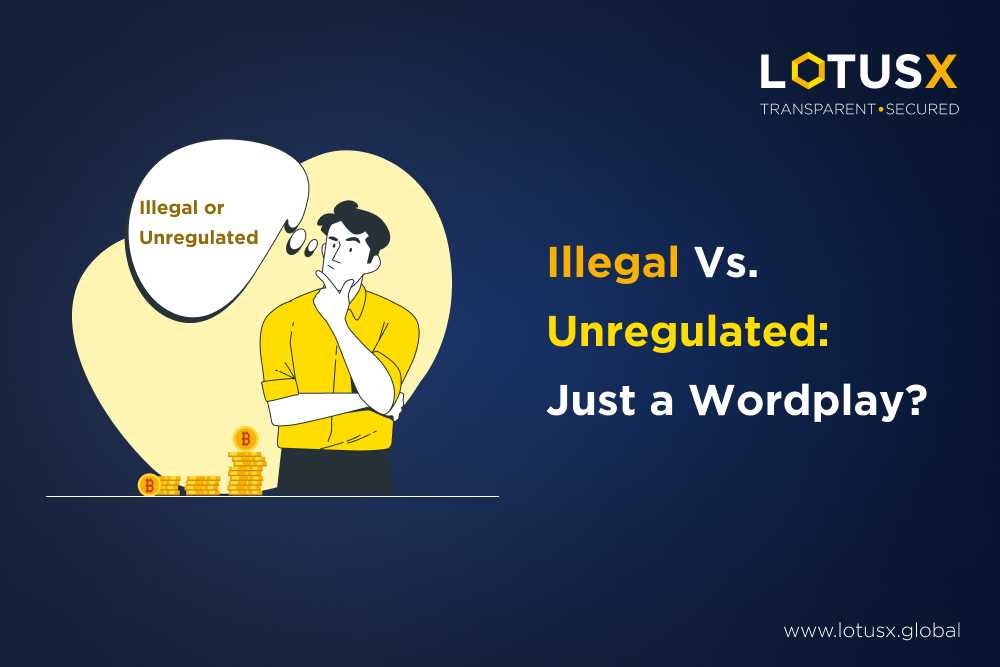Cryptocurrencies have shaken traditional financial systems, which is a challenge for governing bodies worldwide. As the cryptocurrency market changes, it is important to distinguish between unregulated and illegal actions. This blog post aims to shed light on the differences between unregulated and illegal cryptocurrency activities, stressing the importance of regulatory frameworks to protect investors and promote the growth of this innovative sector.
What are Unregulated Cryptocurrency Activities?
Activities that have nothing to do with formal rules are called “unregulated.” A central authority like the government or a financial company does not control cryptocurrencies like Bitcoin, Ethereum, etc. While this decentralisation offers various benefits, such as enhanced privacy and reduced transaction fees, it also means that regulatory bodies have limited control over these activities.
One important thing about cryptocurrency activities that are not controlled is that there are no specific rules or laws about how to use them. This lack of regulations can be hard for investors because it can be hard to ensure their money and deals are safe. Also, cryptocurrency exchanges and platforms that are not regulated may have a different amount of oversight and protection for customers than traditional financial institutions. But you have nothing to worry about when investing with LotusX, as it is completely compliant with regulations.
Some cryptocurrency actions are inherently bad. Many legal projects and companies try to use the benefits of cryptocurrencies while still following the laws and rules already in place. The lack of control means that regulators need to change and make new rules about how cryptocurrencies work.
What are Illegal Cryptocurrency Activities?
On the other hand, illegal coin activities are those that break laws and rules that are already in place. Criminals often use cryptocurrencies’ anonymity and decentralised structure to do bad things, like launder money, fund terrorists, and avoid paying taxes. These activities pose significant challenges for authorities, as tracing and identifying transactions can be complicated due to the pseudonymous nature of cryptocurrencies.

Using cryptocurrency in darknet markets, where illegal goods and services are bought and sold anonymously, is one of the most well-known cases of illicit cryptocurrency use. These markets are mostly hidden online, making it hard for law enforcement to find the people who run them. Also, ransomware attacks, in which hackers lock your computer and demand payment in a digital currency, have become a bigger worry in recent years.
It’s important to realise that illegal activities have nothing to do with the rest of the cryptocurrency business. Most businesses and people who use cryptocurrency follow the law and try to encourage innovation and build value. Governments and regulatory groups worldwide are working to set up systems that reduce the risks of illegal activities while helping cryptocurrencies grow and become more popular.
Why Do We Need Balanced Regulation?
Even though authorities must deal with illegal activities in cryptocurrency, they must also find a balance between protecting consumers and allowing new ideas to grow. Regulations that are too strict and slow the growth of cryptocurrencies can stop legitimate companies from entering the market and slow technological progress. Regulators need to know what makes cryptocurrency different and develop ways to encourage responsible innovation while reducing risks.
The main goals of regulation should be investor safety, anti-money laundering (AML) and know-your-customer (KYC) requirements, taxation, and cybersecurity. Regulators can improve market transparency and investor trust by setting clear rules and ensuring they are followed. The government, regulatory groups, and business people need to work together to find a good balance between regulation and innovation.

Bottom Line!
Knowing the difference between unregulated and illegal cryptocurrency actions is important to understand how cryptocurrencies are changing. While uncontrolled activities don’t have specific rules, illegal activities involve breaking laws and rules already in place. Even though the fact that cryptocurrencies are not controlled is good in some ways, it also shows how much regulation is needed to protect investors and stop illegal activities. Regulators can ensure that cryptocurrencies will be around and grow for a long time by encouraging innovation and reducing risks. This will allow cryptocurrencies to play a good role in the global financial ecosystem.




